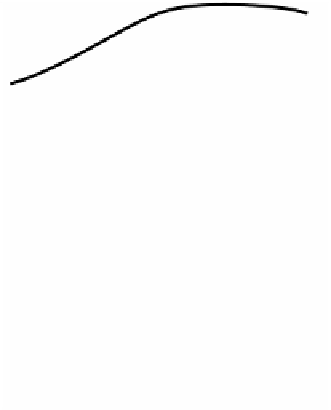Environmental Engineering Reference
In-Depth Information
indoor and outdoor temperatures are the same or little different from each
other. Such conditions exist for brief periods (hours) during diurnal changes
in outdoor temperatures, and for more extended periods on mild overcast
days, and mild days in the fall and autumn in temperate climatic regions.
They commonly occur in coastal regions where maritime climates produce
outdoor temperature conditions which in many cases are in the same range
as those indoors.
B.
Wind
Infiltration and exfiltration are also significantly influenced by wind. The
effect of wind on pressures both inside and outside of buildings is a relatively
complex phenomenon.
As wind approaches a building it decelerates, creating significant posi-
tive pressure on the windward face. As wind is deflected, its flow separates
at a building's sides as well as its top or roof. This produces negative pres-
sures around the sides of the building, the roof, and the leeward side. The
effect of these pressure differences is to cause an inflow of air on the wind
side and an outflow on all exterior surfaces which are negative relative to
indoor pressures. The effects of wind on pressure conditions on a rectangular
building oriented perpendicular to the wind is illustrated in
Figure 11.4
.
The
distribution of positive and negative pressures on a building depends on
wind speed, building geometry and size, and the incident angle of the wind.
The magnitude and distribution of infiltration air is influenced by the type
of building cladding; tightness of the building envelope; and barriers to air
Figure 11.4
Effect of wind on pressure conditions in/on a rectangular building
oriented perpendicular to the wind. (From Allen, C.,
Technical Note AIC 13
, Air
Infiltration Centre, Berkshire, U.K., 1984. With permission.)











